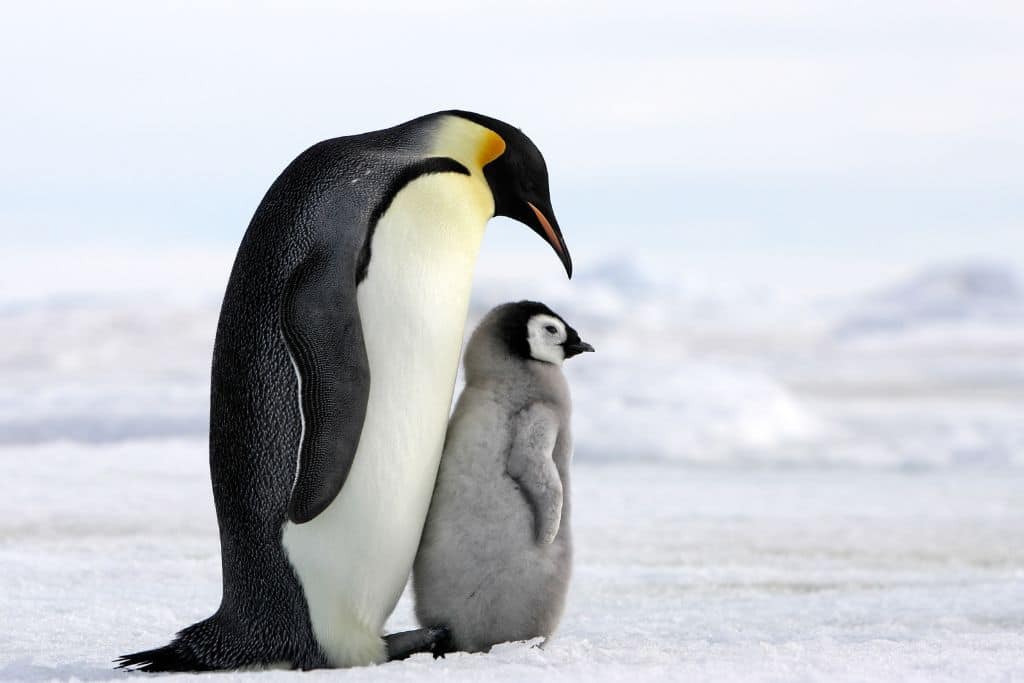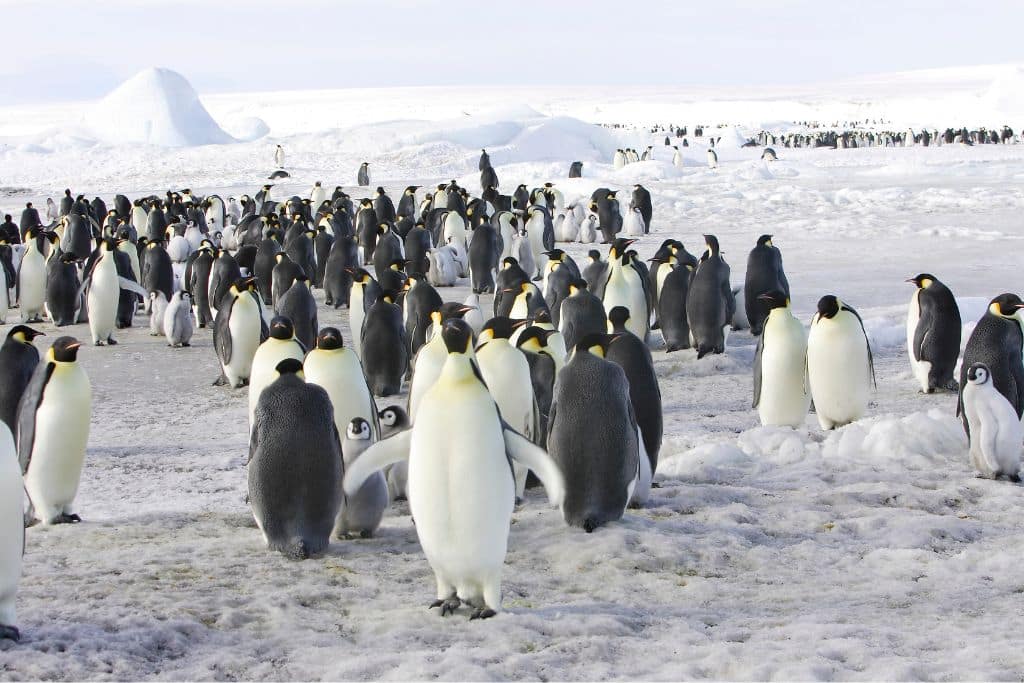Record sea ice loss in Antarctica in spring 2022 is behind the first recorded widespread breeding failure among emperor penguins.
—
Emperor Penguins Could Disappear By the End of the Century
Climate change-triggered melting of sea ice in Antarctica is taking a heavy toll on emperor penguins and could wipe out entire populations by as early as 2100, new research suggests.
Classified as one of Antarctica’s most vulnerable species, emperor penguins require sea ice attached to solid land between April and January to breed. This makes them extremely vulnerable to rapid sea ice loss in the region, which reached record levels in the spring season of 2022.
According to the study, published last week in Communications Earth & Environment, record low sea ice in 2022 coincided with the first-ever recorded large-scale breeding failure of emperor penguins. Researchers found that, of the five breeding sites in Antarctica, “all but one experienced total breeding failure after sea ice break-up.” They argue that over 90% of the species colonies will be “quasi-extinct” by 2100 if current warming rates continue.
Commenting on the findings, lead author Peter Fretwell said researchers have “never seen emperor penguins fail to breed at this scale for a single season.”

Emperor penguins rely on stable sea ice attached to land for nesting and raising their chicks.
Antarctica’s Unprecedented Sea Ice Loss Rates Could Have Dramatic Consequences
Research published in early August revealed that there is no quick fix to reverse the damage done in the region, as sea ice levels reached a record low this year, mainly as a result of planet-warming fossil fuels. With an additional heating of at least 0.4C now virtually unavoidable, scientists conclude that the continent will experience more pronounced extreme weather events in the years to come, adding that they “cannot rule out future cascades where extreme events may have wide-ranging linked impacts in multiple realms.”
Antarctic sea ice hit an all-time low in February. In the same month, a team of scientists that spent nearly two months on West Antarctica’s Thwaites Glacier between late 2019 and early 2020, warned that its collapse could result in more than half a metre (about 1.6 feet) of global sea level rise potential. However, they also found that the melting of the glacier –nicknamed “Doomsday Glacier” because of the catastrophic impact of its potential collapse – could potentially destabilise neighbouring glaciers, resulting in sea level rise of up to three metres (9.8 feet).
The UN’s World Meteorological Organisation (WMO) reported that temperatures in Antarctica have increased by almost 3C over the past 50 years, with glaciers experiencing an accelerated retreat. Because the Antarctic ice sheet contains 58 metres (190 feet) of sea level rise equivalent over several centuries, scientists are growing worried about its recent behaviour.
Besides sea levels, melting glaciers in the Antarctic region could result in significant biodiversity loss, as thousands of animal species are dependent of the ice pack. In fact, scientists recently suggested that up to two-thirds of Antarctica’s native species are under threat of extinction or major population declines by the end of the current century.
You might also like: The Tipping Points of Climate Change: How Will Our World Change?


















